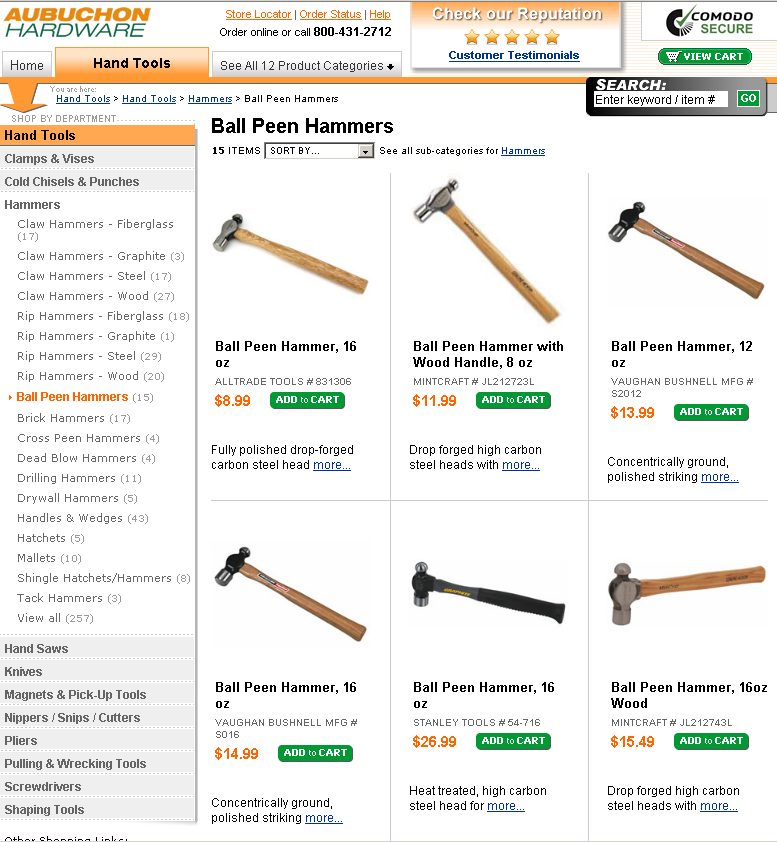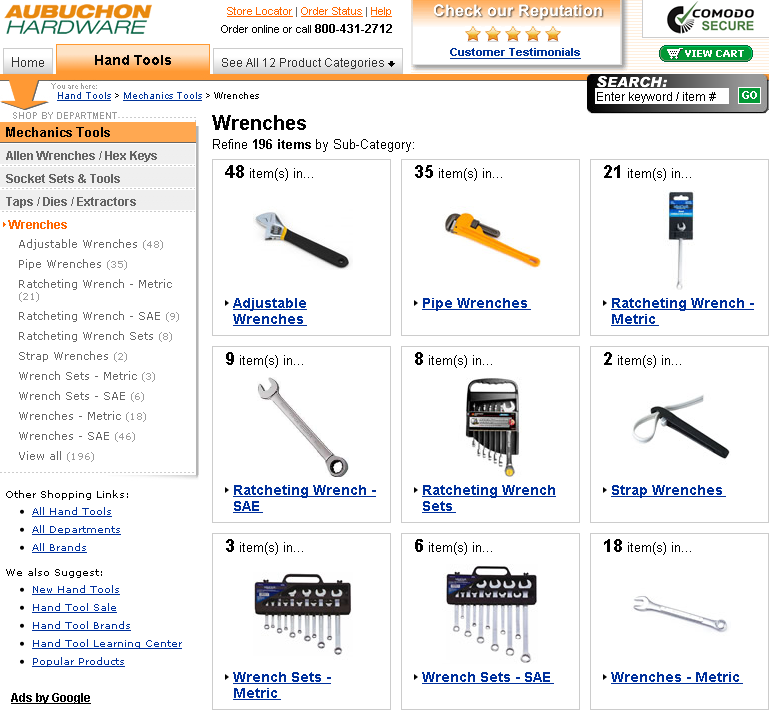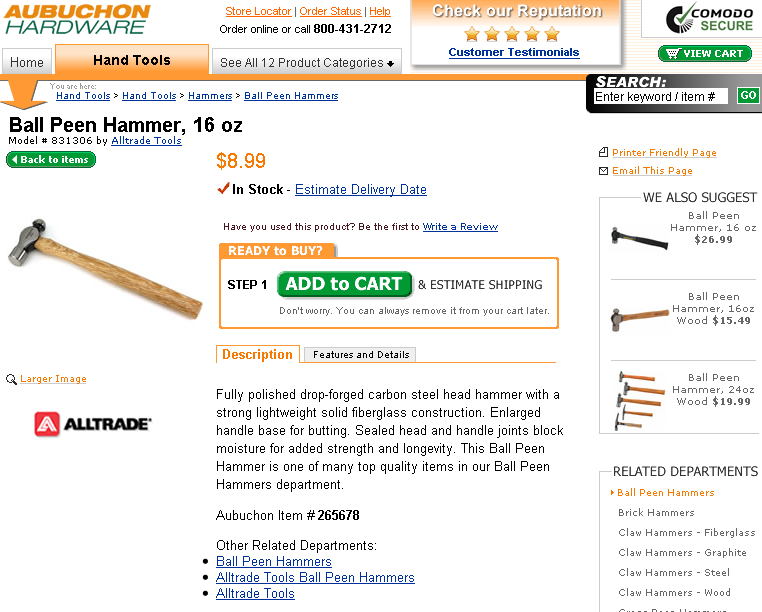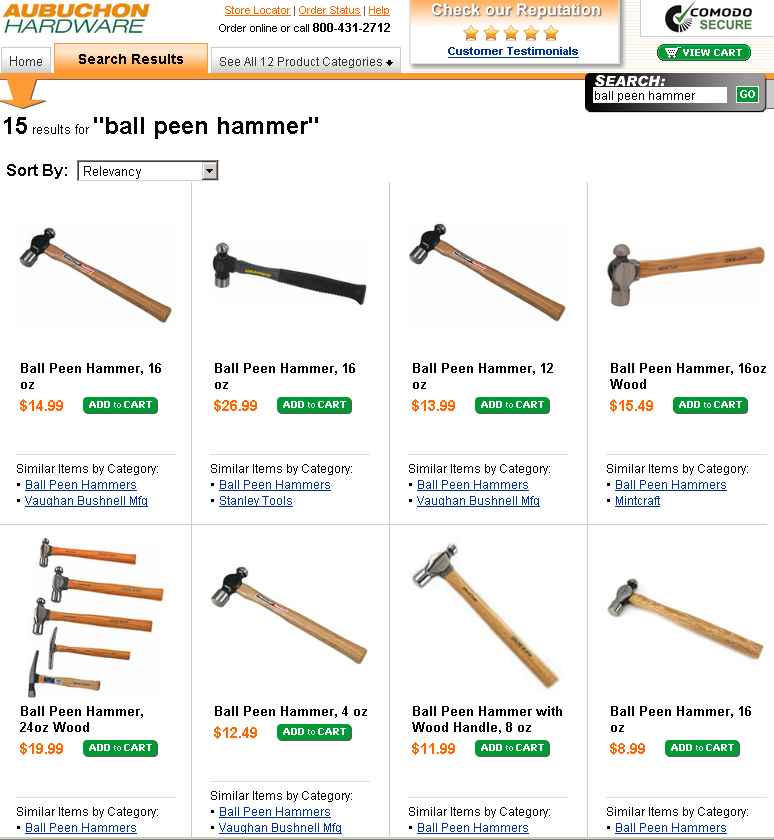Understanding Google’s Latest Landing Page Quality Score Release
As Pamela Parker described at SEL recently, Google has announced that going forward, landing page quality will be a larger factor in an ad’s overall Quality Score. Given that my last post for SEL was on Quality Score and suggested that landing page quality was mostly a hammer used to beat up bad actors and […]
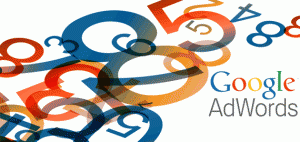
Given that my last post for SEL was on Quality Score and suggested that landing page quality was mostly a hammer used to beat up bad actors and didn’t have much meaning for legitimate businesses, this announcement was a bit embarrassing. It also made me curious as to how quality will be defined.
I got a chance to speak with Jonathan Alferness, director of product development on the Google ads quality team, to delve deeper into the purpose of this initiative and try to glean insight as to how landing page quality would be measured.
Jonathan was very helpful with respect to the former question and understandably protective when it came to the latter.
Below, I’ll make a clear distinction between what Google is willing to say publicly about landing page quality and what I believe this means. I’ll summarize what Google has said either through my conversation with Jonathan or elsewhere in print in italics. My speculation will be in normal font.
Why Did Google Do This?
Jonathan made the case to Pamela and to me that the intent is to improve user experience.
When landing pages don’t line up well with the user’s search, the user has a poor experience, and ultimately that’s bad for everyone.
It’s bad for the user because they don’t end up where they expected to end up; it’s bad for the advertiser because they clicked on an ad and ended up somewhere they didn’t want to be, winning the advertiser no great brand impression; and it’s bad for Google, because that user is more likely to seek a different search experience and less likely to use Google sponsored links in the future.
This makes perfect sense. As I argued in last month’s post, Google maximizes its immediate term revenue by making QS 100% based on anticipated Click-Through Rate (CTR). Factors related to landing page or anything else reduce Google’s revenue per SERP view by reducing the importance of CTR.
However, poor landing page experiences might reduce Google’s long-term revenue by training users not to click on sponsored listings. That could jeopardize the business.
By creating a finer gradation between “your landing page stinks” and “it doesn’t stink” — essentially where we’ve been with landing page QS — Google rewards advertisers that pay attention to landing page decisions and creates another incentive to provide a great user experience.
In the long run, better landing pages lead to higher conversion rates, which in turn means an increase in the value of traffic, therefore allowing higher bids and correspondingly more traffic at the same efficiency. It’s a beautiful virtuous circle.
It’s also at least part of the reason that Google bought Urchin and made Google Analytics free. Giving advertisers the tools to diagnose user behavior and improve website effectiveness should ultimately lead to better monetization of traffic and higher bids in the paid search auction. Smart. Very smart.
How Much Weight Will Be Given To Landing Page Quality?
More.
Google isn’t saying much on this topic, and what they’re saying is a bit of a mixed bag. Jonathan told Pamela that ads with high-quality landing pages will get a “strong boost”; he told me it would be a “slight boost”; and on the AdWords blog post it says: “We expect most campaigns will not see a significant change in overall performance.”
They began the roll-out in South America a month ago and appear to be rolling it out to smaller accounts in the US first. This suggests to me that they think it could have a material effect that they want to watch very carefully. Perhaps not.
Making even minor changes to software should be tested thoroughly before roll-out. Perhaps most campaigns won’t see a significant effect because most landing pages are roughly equivalent, so this change will mostly impact the “outliers”?
It’s hard to imagine that Google will sacrifice revenue on this, either. They’ve likely done the math to see how much gradations in landing page quality affect the propensity of people to use sponsored links in the immediate future, and have tuned this dial to be revenue positive even in the short run. It will go on to be yet another one of Google’s revenue dials, subject to periodic “tuning.”
How Will Google Determine ‘Quality’?
Jonathan said: “Google is focused on both relevance and content on the landing page in addition to the user response to such landing pages.”
I pressed on this with the question: “Will advertisers with Google conversion tracking on their sites have an advantage over other advertisers, given that conversion rates are a very clear signal as to whether users found what they wanted?”
His response was: “There is no special information derived for some customers but not others. We apply the principles of landing page quality and relevance to every ad and every landing page. The advertising system is dynamic, as an auction takes place for each query.”
The behavioral signals that Google traces must therefore be related to what they can track for all advertisers, not just those with Google conversion tracking: bounce rate, propensity to search again in short order, time on site, etc. I’d love to know how much of this behavioral data is gathered through Google toolbars as a sampling method rather than from watching browsers return behavior from Google.com, but I don’t know that.
With respect to the relevance and content on the page, Google means to determine: Does this page match the user’s intent? Behavior is one guide, but content on the page will matter as well. Pages that seem to be about the topic of the user’s search will do better here than general landing pages.
It would be surprising if something as simple as blowing the user’s search string or the keyword back at the user dynamically on every page would be meaningful in terms of content on the page unless it affects user behavior.
I suspect the advertiser will be rewarded for landing a “ball peen hammer” search on a page with ball peen hammers on it, rather than a page with only wrenches.
High quality landing page for “ball peen hammer” search:
Previously high quality landing page in Google’s eyes — ie: “not spam, and loads fast” — now considered low quality content:
Another High quality landing page for the same search: I bet they like a product page just as much
Whether the advertiser selects the ideal ball peen hammer page chosen among several options is probably beneath the level of detail they’re getting into at this point on the “content on the page” piece of the equation.
I’d be stunned if Google tried to differentiate between the first and third based on content on the page, but our experience suggests that the conversion rates will probably be higher for the first page.
One worry that I expressed was that Google would bake in some preconceived notions about good pages and bad pages.
For example, we’ve heard it expressed that Google thinks taking someone from a Google SERP to someone else’s SERP is a bad experience, therefore a website’s search results pages might be frowned upon as a landing page choice.
Would Google arbitrarily say this was a poor quality landing page for a “ball peen hammer” search?
That would fly in the face of our experience, which suggests that often a good site-search results page outperforms a well-chosen sub-category page in terms of conversion rates.
Similarly, a “view all” page often outperforms landing folks on page 1, but it’s conceivable that latency considerations due to loading “all” the images will trump what we know to be better performance from a conversion rate perspective.
Google could also conceivably decide which page on an advertiser’s site ranks highest for them in organic listings on a given search and reward folks who choose that page for paid search ads as well. That would rankle those of us who believe smart humans who pay attention pick better pages than Google does. More on that in a later post.
Jonathan responded that Google wasn’t baking in preconceived notions, that relevant content and user behavior would define the landing page quality.
Conclusions
Within e-commerce, this could serve as one more penalty for those who aren’t mass merchants. If you sell office chairs of the $500 variety, not the $40 variety, you’ll likely find your conversion rate on the term “Office chairs” to be worse than a “competitor” who sells the $40 version even with qualifying ad copy to wit “Starting at $499.”
The conversion rate is lower, the bounce rate is higher, so behavioral signals after the click incur a landing page quality penalty on top of the CTR penalty incurred by the qualifying ad copy. This double whammy may make it even tougher to compete.
Maybe that’s the “right” result for users, but maybe it takes away diversity of choices for those who actually read the copy.
At the end of the day, it appears likely that this change will primarily reward advertisers for doing what they should have done all along. Pick the best page among the available choices for your PPC landing pages, and design those pages for maximum effectiveness in monetizing traffic. If you’ve been doing that since day one, expect a bit of a boost in traffic in the coming weeks.
(Stock image via Shutterstock.com. Used with permission.)
Opinions expressed in this article are those of the guest author and not necessarily Search Engine Land. Staff authors are listed here.
Related stories
New on Search Engine Land
